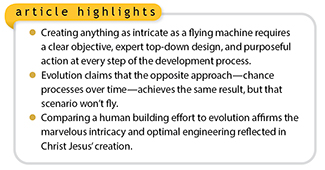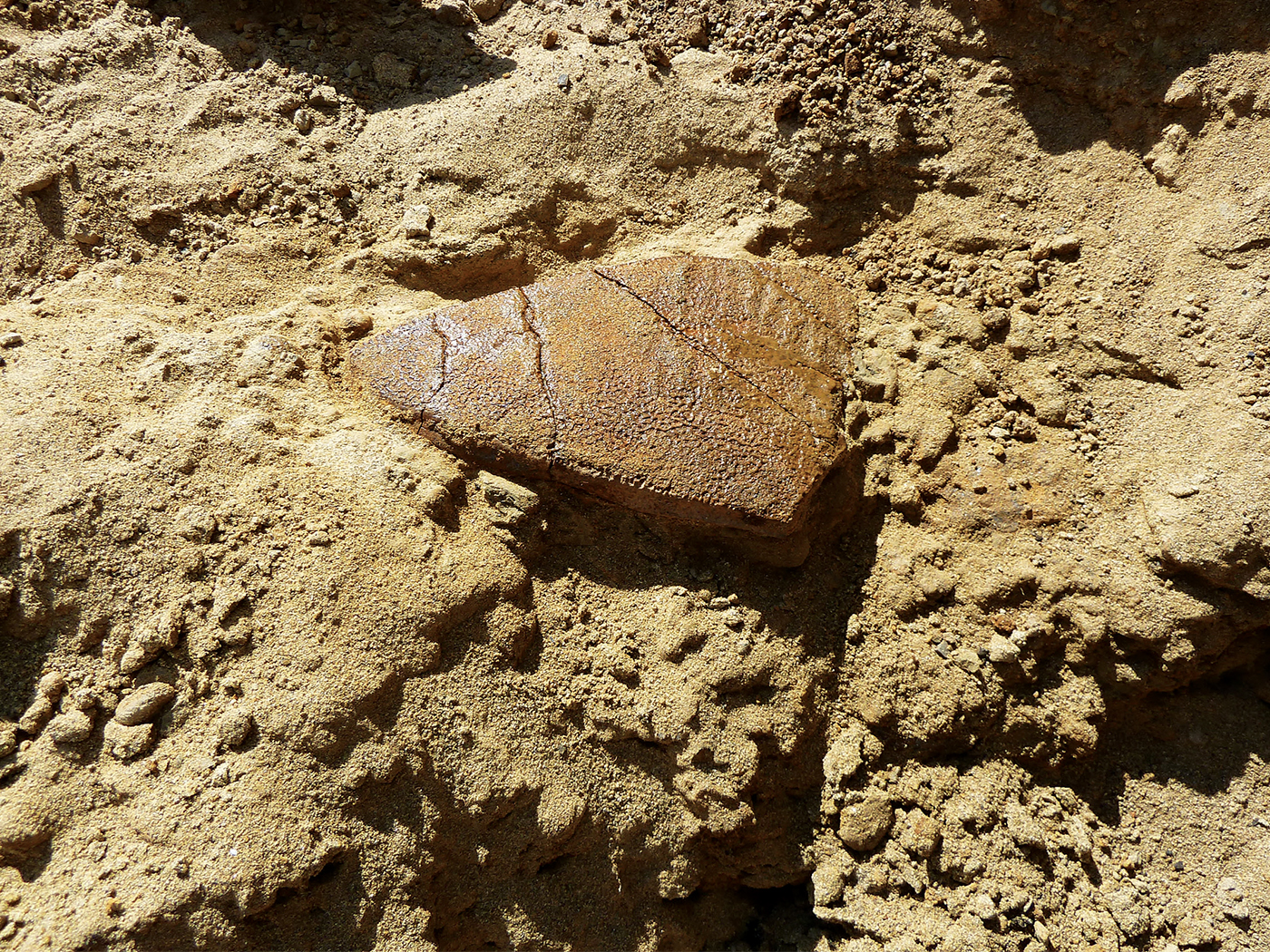 For thousands of years, people have dreamed of flying because they witnessed birds and knew it was possible. Inspired by a study of birds, the Wright brothers created the first functional flying machine in 1903.1 What does it take to build a plane, and what can that tell us about creation?
For thousands of years, people have dreamed of flying because they witnessed birds and knew it was possible. Inspired by a study of birds, the Wright brothers created the first functional flying machine in 1903.1 What does it take to build a plane, and what can that tell us about creation?
Let’s run a thought experiment to compare human design processes to creation. All design efforts start with a purpose. Say our goal is to build the world’s safest, most efficient 200-passenger aircraft capable of 7,000-mile nonstop flights, and money is no object.
We’ll begin by recruiting the most talented and experienced aeronautical designers, pilots, engineers, machinists, technicians, and computer experts available. Only specific applicable skill sets will suffice.
Top-Down Design
We start the design effort with the clear objective stated above regarding safety, efficiency, passenger capacity, and flight range. Existing world-class aircraft will be our benchmarks—our new flying machine must exceed their capabilities.
Beginning with that specific goal, our team then establishes the overall functional requirements the craft needs to meet the objective. Then we determine the required subsystems supporting each of those basic functions. Only after laying out all the systems and subsystems does the team determine the parts needed for each.
Our team then designs, plans, and models to the required specifications and selects the model best suited to meet the objective. We test, analyze, and adjust that model to the predetermined objective, i.e., to exceed the safety and efficiency levels of the benchmark airplanes. This kind of top-down design is described by Dr. Stuart Burgess in a YouTube video on creation engineering.2
No Dice Allowed
In Darwinian evolution, bottom-up design is proposed. Evolutionists claim they have a mechanism to explain creature design, but it’s the opposite of human engineering.3 Random chance processes are claimed to somehow drive forces that build and cobble together parts, tinker with the simplest forms of living creatures, and slowly mold them into extraordinary creatures…like birds.
But intricate creatures and complex mechanical machines have systems that must efficiently work together. Many of these systems are wholly dependent on each other. Each part is planned and placed exactly where it fulfills a requirement so that systems achieve functional coherence.3 Aircraft pieces seamlessly fit together because a team of expert sentient beings with volitional intent designed them to fit together. Each piece is consciously suited for a specific task. In both the living bird and the flying machine, every system and every piece must be in place and working for successful flight to occur.
The end goal is top-of-mind in each team member’s effort at every step of the design and building process. One clearly-defined common objective drives the operation—nothing is left to chance. On the contrary, every effort is made to eliminate chance from the process. Building something even modestly intricate is never a random procedure.
Conclusion
What did we learn from our thought experiment? Function (in this case, optimal safety and efficiency in flight) only occurs when all the proper pieces are in place, integrated and operating at the same time. Bottom-up design doesn’t work. Random processes can’t create anything complex, much less something functionally intricate and irreducibly complex like a living creature or a jet airplane.
Comparing a human building effort to evolution shows the great weakness of Darwin’s theory and opens our eyes to the majesty of Christ Jesus’ creative process. He knew exactly which creatures He wanted to create, suited each one from the top-down, and placed them exactly where He wanted them.
Christ reveals Himself in creation, and one reason He placed birds in the air might be so we would seek to fly ourselves. Only God can create a perfect flying machine because only He is all-knowing. And in our efforts to fly, we follow His lead.
References
- Bergman, J. 2018. Bioinspiration: The Birds Will Tell You. Acts & Facts. 47 (9): 16.
- Burgess, S. How is the Creation Engineered for Life? From Is Genesis History, posted on youtube.com August 19, 2018.
- Guliuzza, R. 2012. Clearly Seen: Constructing Solid Arguments for Design. Dallas, TX: Institute for Creation Research. This book explains in detail many of the design and engineering concepts addressed in this article.
* Mr. Stamp is an editor at the Institute for Creation Research.














